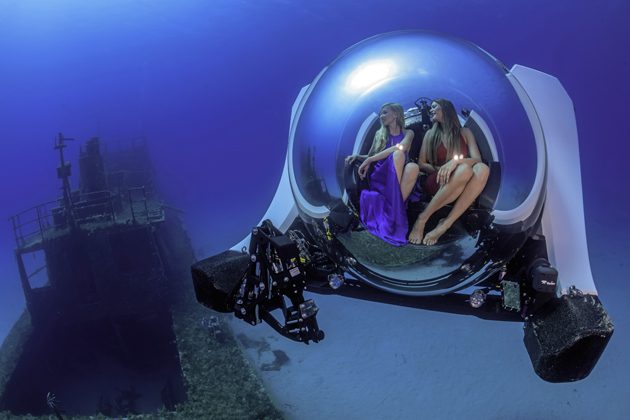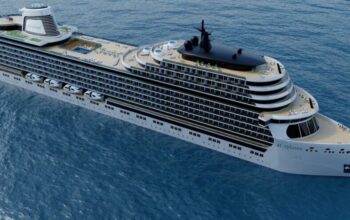Here’s What It’s Like to Take A Submersible on an Underwater Dive.
You haven’t been truly underwater until you’ve explored the ocean’s depths in a submersible.
The following written content by Julia Zaltzman

What a thing, to be in a submersible for the first time, separated from reef fish and gin-clear water by nothing more than a few inches of acrylic. Inside the three-person Triton 3300/3 there’s a complete 360-degree line of sight, making it hard to discern where the transparent sphere ends and ocean begins. It’s unexpectedly roomy—not to mention the comfortable seats and crisp air—with unobstructed views up front, underfoot, overhead, even through the pilot’s seat in the rear.
Just minutes earlier I’d been aboard the U Boat Navigator, a dedicated dive vessel, bouncing in lively seas off Malta. A pair of submersibles—a one-seat Triton 3300/1 alongside the three-seater—sat on the foredeck. “A sub is not a toy,” Tom Hutton, Cookson Adventures’ director of operations, told us. “It’s a means of exploring an alien environment.” Capable of diving to 3,300 feet, the Triton is a popular choice among researchers and documentarians, including the crews who made the BBC’s Blue Planet ll and Great Barrier Reef with Sir David Attenborough.
As we descend toward the hull of a sunken German WWII patrol boat, Hutton’s term “alien environment” comes alive. The feeling is otherworldly, both thrilling and peaceful. At 82 feet down, sunrays shimmer off the seafloor and the wreck swarms with fish and divers. It’s surprisingly quiet inside the sub, nothing but a soft mechanical whirring as pilot Dmitry Tomashov alternates between navigating around the vessel and hovering above the ocean floor. On the foredeck, the nearly 18,000-pound sphere seemed large and unwieldy, but the Triton is at home underwater, gliding with precision as Tomashov steers from a central console. Claustrophobia, which I had feared, never materializes. After 45 minutes, we ascend from the dreamlike state back to the surface.
After such an incomparable experience, it’s no surprise that demand for private submersibles is soaring. Yacht owners are building boats with room enough to store a mini-sub—sometimes two—and they’re a feature on many cruise ships. But they’re expensive machines: The 3300/3 costs around $3.8 million, while the Super Yacht Sub 3, from competitor U-Boat Worx (which I had test-dived two weeks prior) is closer to $2.9 million. Many owners keep them not just for fun, but as research vehicles for archaeological dives and for the discovery of new marine species. Read more from Robb Report.
Subscribe here






